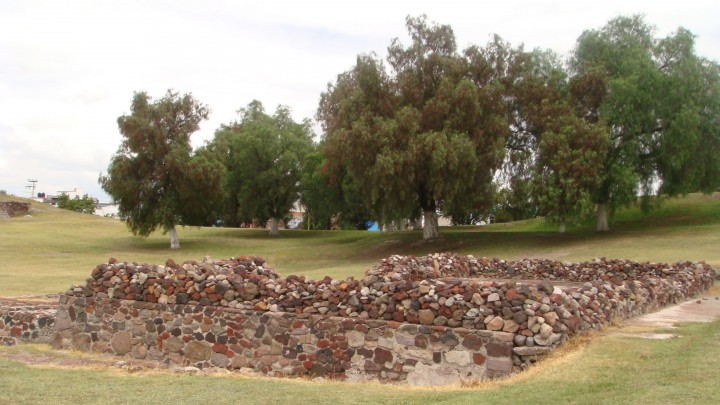Archeological Sites
18 Sites
The prosperous city of Matlazinca, between the Mexica empire and the Purépecha zone of influence. Conquered by the Mexicas in 1474, the remains date from this period. Notable for the rounded bases of the Temple of Ehecatl-Quetzalcoatl, with its tzompantli (wall of skulls).
Estado de México
Altiplano Central
1703
Seven and a half centuries ago, three Chichimeca lords arrived in Chimalhuacán (abandoned since the fall of Tula), and re-founded a city which became a great Acolhua capital. As a testimony they left the Tecpan, the superb palace of their Tlatoani (chief), and a great number of excellent sculptures, which was their main activity.
Estado de México
Altiplano Central
1704
Located in Naucalpan de Juárez, not far from the Periférico Norte (highway) in the northern suburbs of Mexico City, this site offers something unusual, a palace belonging to the fifteenth century pre-Hispanic nobility, one of the few examples of the civic architecture of the period.
Estado de México
Altiplano Central
1705
This important Otomi settlement was built in the upper part of the plateau of San Miguel which was a perfect site for monitoring movements in the valley of Acambay, or Los Espejos, in the State of Mexico.
Estado de México
Altiplano Central
1706
Situated near Texcoco, this pre-Hispanic city was one of the most important settlements of Acolhuacan. It covered an enormous area, extending beyond the boundary marked by a great wall 765 yards long by 23 feet high.
Estado de México
Altiplano Central
1707
Previously known as Old Ixtapaluca, this important ceremonial center in the Valley of Mexico is mentioned in the Xolotl Codex.
Estado de México
Altiplano Central
1702
Here lie the ruins of the great city of Texcoco, capital of Acolhuacan (660 to 1521), where once stood the poet king Nezahualcóyotl's palace. Nowadays, only a small architectural complex remains, which allows us to admire the skill of its inhabitants at cutting and maneuvering enormous blocks of stone.
Estado de México
Altiplano Central
1708
This is a small settlement that was subjugated by the Acolhua. It maintains a westward-facing pyramid, which is unusual for Mesoamerica and leads us to suppose that it was dedicated to Huitzilopochtli. There are rooms next to the pyramid in which the rulers lived.
Estado de México
Altiplano Central
1709
This site is unique in Mesoamerica, as it was carved in one piece out of an enormous rock on the edge of a cliff for military initiation purposes. The site was created by the Mexica not long before the Spanish conquest, and is dedicated to the initiation of Eagle and Jaguar-Ocelot warriors. It contains splendid sculptures of these symbols.
Estado de México
Altiplano Central
1710














